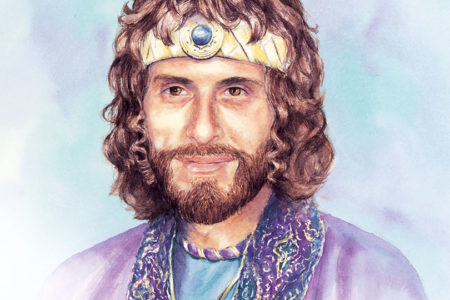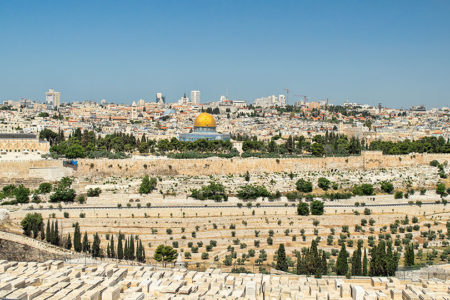Israel in the News Sep/Oct 2008
Obama Recants AIPAC Statement
Apparently Harvard graduate Barack Obama has trouble with the English language. Or he says one thing when he speaks to Jewish people and another when he speaks to CNN.
Under questioning from reporters, Obama, the Democratic Party’s contender for U.S. president, retracted his statement to the American Israel Public Affairs Committee (AIPAC) convention in June that Jerusalem should remain Israel’s undivided capital.
He blamed “poor phrasing” and careless syntax for leading Jewish people to think he meant all of Jerusalem should remain in Israeli hands. Here is what he told AIPAC:
Now let me be clear: Israel’s security is sacrosanct. It is non-negotiable; the Palestinians need a state—the Palestinians need a state that is contiguous and cohesive and that allows them to prosper, but any agreement with the Palestinian people must preserve Israel’s identity as a Jewish state with secure, recognized, defensible borders. And Jerusalem will remain the capital of Israel and it must remain undivided.
But when questioned by CNN’s Fareed Zakaria, Obama said, “You know, the truth is that this was an example where we had some poor phrasing in the speech. And we immediately tried to correct the interpretation that was given….It is an example of us making sure that we are careful in terms of our syntax.”
Then he threw the onus for making peace back on Israel, adding that Israelis must “recognize that their long-term viability as a Jewish state is going to depend on their ability to create peace with their neighbors.”
More Housing for Jerusalem
ARUTZ-7—The Regional Construction and Planning Board for Jerusalem has approved 910 housing units in Har Homa, 900 in western Pisgat Ze’ev, and several dozen in Har Nof.
Har Homa is located in southern Jerusalem. The project will take up some 75 acres with buildings between five and nine stories tall.
The north-Jerusalem neighborhood of Pisgat Ze’ev already has a population of close to 50,000. This project will take up only 35 acres and will be near the route of the city’s not-yet-completed light railway.
The 90 units in the religious neighborhood of Har Nof will be specifically for a group of soon-to-be new immigrants from Venezuela.
Jerusalem is Israel’s largest city in terms of both population and physical size. Close to 750,000 people live in Jerusalem, a third of whom are Arabs, and the municipality controls nearly 50 square miles. By comparison, Tel Aviv has 390,000 residents, on 20 square miles.
Messianic Jews Win Odd Victory
If you believe in Jesus and have a Jewish mother, you are still ineligible to become an Israeli citizen under the Law of Return. But if you believe in Jesus and only your father is Jewish, you may receive citizenship.
That is the gist of the High Court of Justice’s precedent-setting ruling in April that sided with 12 messianic Jews who waged a lengthy battle to obtain Israeli citizenship.
The ruling is interesting because it only grants citizenship to Jewish believers whom the government does not even consider Jewish. A person is only Jewish by law if the mother is Jewish. The Law of Return, established in 1950, grants automatic citizenship to people who are “legally” Jewish and who have not changed religion. Belief in Jesus is considered “conversion” to another religion.
According to a 1970 amendment, “The rights of a Jew under this law…are also vested in a child and a grandchild of a Jew, the spouse of a Jew, the spouse of a child of a Jew and the spouse of a grandchild of a Jew, except for a person who has been a Jew and has voluntarily changed his religion.”
Thus the 12 won their case because they are not considered Jews yet are the children of Jewish fathers. Someone who believes in Jesus and has a Jewish mother, however, is considered a Jew who changed religions and thus no longer qualifies for Israeli citizenship under the Law of Return.
Some organizations estimate there are 15,000 messianic Jews in Israel and approximately 300,000 worldwide.
Tourism Up!
THE MEDIA LINE—The summer of 2008 has become one of the Holy Land’s best in terms of tourism. As of April, this year was already a record year for tourism in Israel, with a 41 percent increase in tourists over April 2007 and 26 percent more than in April 2006, according to the Ministry of Tourism.
During the first four months of 2008, nearly 1 million tourists arrived in Israel, leading the ministry to predict that it will meet its goal of attracting 2.8 million tourists to Israel this year.
Moreover, the number of Americans visiting Israel is hitting an all-time high, with 85,000 American tourists during January and February, and many more expected during the course of Israel’s 60th anniversary year, which began in early May.
“The majority of tourists to Israel this summer are American, and the [weakened] dollar doesn’t affect them one way or another,” says Mark Feldman, the American-born owner of Zion Tours Travel Agency in Jerusalem.
“Everything in the Israeli tourist industry is based on dollars, from airline tickets and hotels to half the tourist attractions, so Israel becomes a much cheaper alternative because the dollar goes a lot further.
Future Temple Priests Get Fitted for Holy Garments
ARUTZ-7—As the Jewish people continue their national return to their ancestral homeland, tailors at the Temple Institute in Jerusalem’s Old City began taking measurements of Kohanim (the priestly tribe designated to run the Temple services) in early July in anticipation of an even bigger event: the dedication of the Third Temple.
Yehuda Glick, director of the Temple Institute, presided over the first-ever fitting of Kohanim for their priestly garments. “Today, in this room, Kohanim are being measured for the first time in 2,000 years for the type of garments they will be wearing in the rebuilt Temple,” announced Glick to an audience of rabbis, reporters, and cameramen on hand to witness the historic event.
The garments of the Kohanim are described in great detail in the Torah. While scale models of the future Temple can be seen in shop windows and the clothes of the priesthood can be seen hanging on mannequins, the event marked the first time since the destruction of the Second Temple that real-life Kohanim have been measured for the clothing of their holy work in the Temple.
At the beginning of the ceremony, Rabbi Yisrael Ariel delivered a speech describing the importance of the occasion. “Just like the animal sacrifices atone for the nation of Israel, so do the clothes of the Kohen,” he remarked. A man named Aviad Jerufi was on hand to model the full uniform of the Kohen, while each individual garment was described.
Pamphlets were then distributed to each Kohen being measured, containing a Jewish legal description of the clothes they were to receive. Representatives from the Israel Textile Association recorded each Kohen’s head circumference, shoulder width, leg length, and other measurements as they were taken before the audience.
According to Yaacov Gutfreund and Yitzchak Shechter of the Israel Textile Association, the clothes for which the Kohanim were measured during the special fitting, and which they are to receive, are not intended to be worn during actual Temple service. They are rather meant to be identical in fabric and dimension to the clothing they hope and pray to wear when the Holy Temple is rededicated.
The fitting of the high priest, who has a special set of garments, will have to wait until then.







